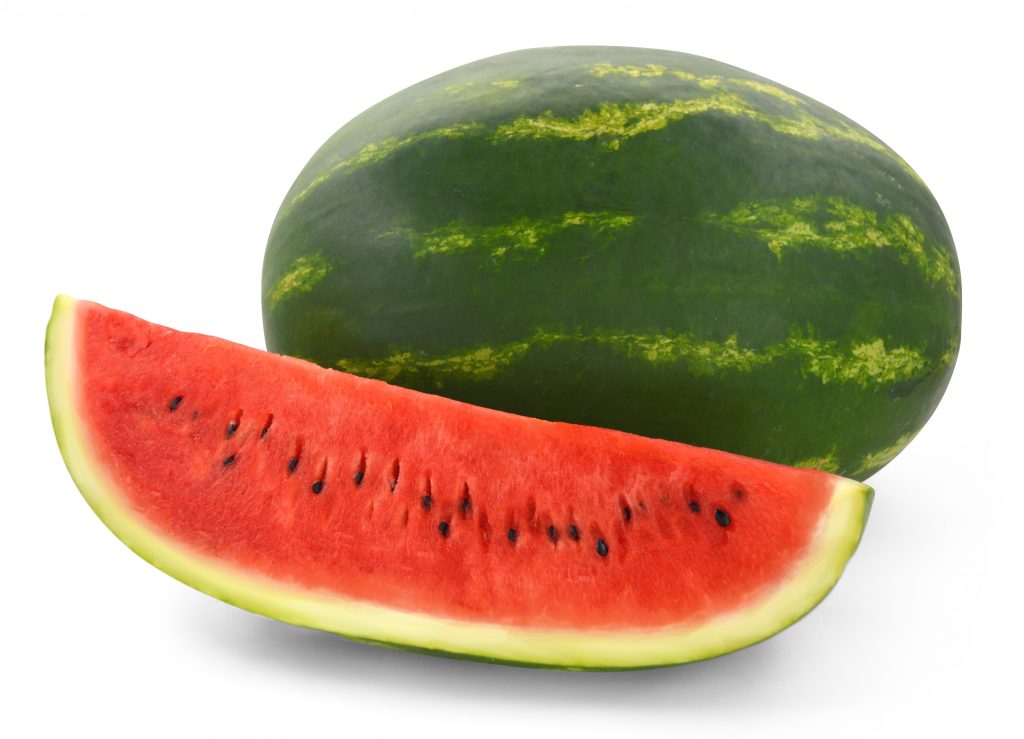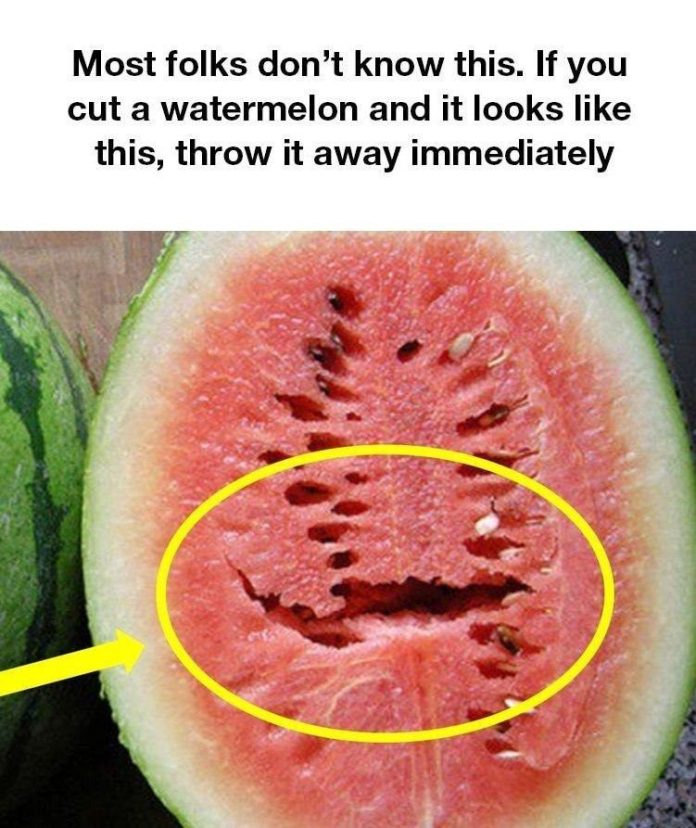Whether you enjoy watermelon as a refreshing snack or summer staple, it’s crucial to know when it’s no longer safe. A surprisingly important sign? Cracks or splits inside the flesh—these could indicate spoilage or contamination that warrants immediate disposal.
Cracks in the Flesh: A Hidden Danger
When you cut open a watermelon and see wide internal cracks or gaps, don’t ignore them. These fissures can result from:
- Over‑ripening or rapid growth—sometimes chemically induced by agents like forchlorfenuron, which may create abnormal internal fractures
- Physical stress during transport or storage
- These issues let bacteria and pathogens infiltrate the fruit, increasing the risk of food poisoning from Salmonella, Listeria, or fermentation-related microbes.

Other Clear Signs of Spoilage
1. Mold, Discoloration, and Soft Spots
Visible mold—green, black, or white—on the rind or flesh is a danger sign. Soft or mushy patches also point to early decay.
2. Off Smells
Even if sliced look normal, a sour or fermented odor suggests internal spoilage. Trust your nose.
3. Foaming Juice
Return to watermelon with foamy or bubbly liquid seeping out? This indicates fermentation. Experts warn foaming from gas buildup may harbor harmful bacteria—throw it away.
4. Dull or Faded Color
A dull rind lacking sheen, or flesh that seems overly pale, may be past its peak.
5. Flat Knock Test
Tap a ripe watermelon—it should sound hollow. A dull or flat thud can suggest spoilage or that the fruit lacks juiciness.
Long-Term Storage Best Practices
For Whole Melons
Store in a cool, dry place, out of direct sunlight. Whole watermelons remain fresh ~1 week at room temperature and up to 2 weeks refrigerated
For Cut Pieces
Wrap tightly or use an airtight container. Keep refrigerated and consume within 3–5 days. To prevent sogginess, drain excess juice daily
Choosing the Right Watermelon
Look for a creamy yellow field spot (the bottom side that sat on the ground)—indicating good ripeness. Opt for a fruit that feels heavy for its size—a sign of high water content
Check the rind: it should be firm, smooth, and undented
Perform the knock test for freshness
Smell the melon—if there’s no sweet, fruity aroma, it might be underripe.
When in Doubt, Throw It Out
Food experts strongly advise:
“When in doubt, throw it out.”
Even subtle signs—odd smells, foam, soft spots—could indicate contamination. Consuming spoiled watermelon can cause nausea, diarrhea, and other symptoms of foodborne illness.
Safe Enjoyment Tips
- Inspect before cutting: check for visible splits, mold, dents, or odd coloration.
- Cut mindfully: if you discover hidden cracks or unusual texture, discard the fruit immediately.
- Store properly: keep cut melon cold, drained, and sealed.
- Prioritize safety: fresh watermelon is nourishing; spoiled melon is risky.

Final Takeaway
Watermelon is a delicious, hydrating summer treat—but only when fresh. Watch for internal cracks, mold, foam, odors, and soft spots. These warning signs mean it’s time to toss the melon and avoid unnecessary health risks. Better safe than sorry! By staying alert to spoilage signs and following storage tips, you can safely enjoy watermelon without risking your health or well-being.

















